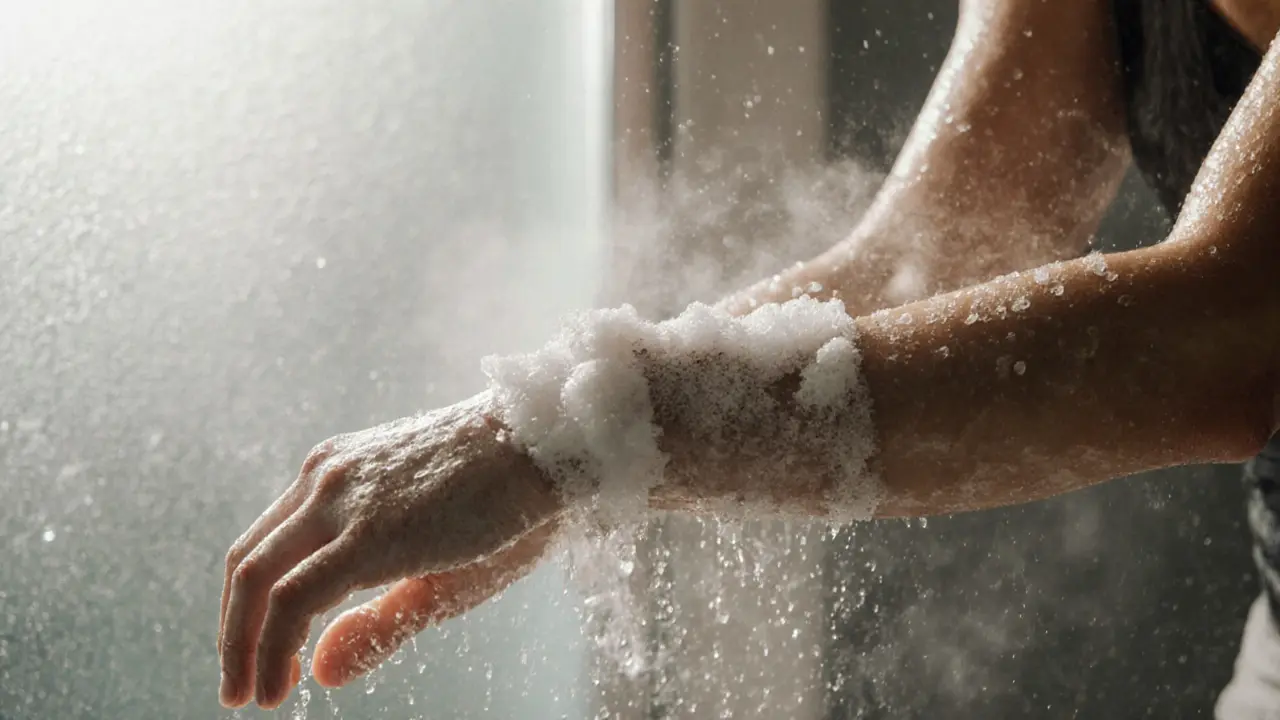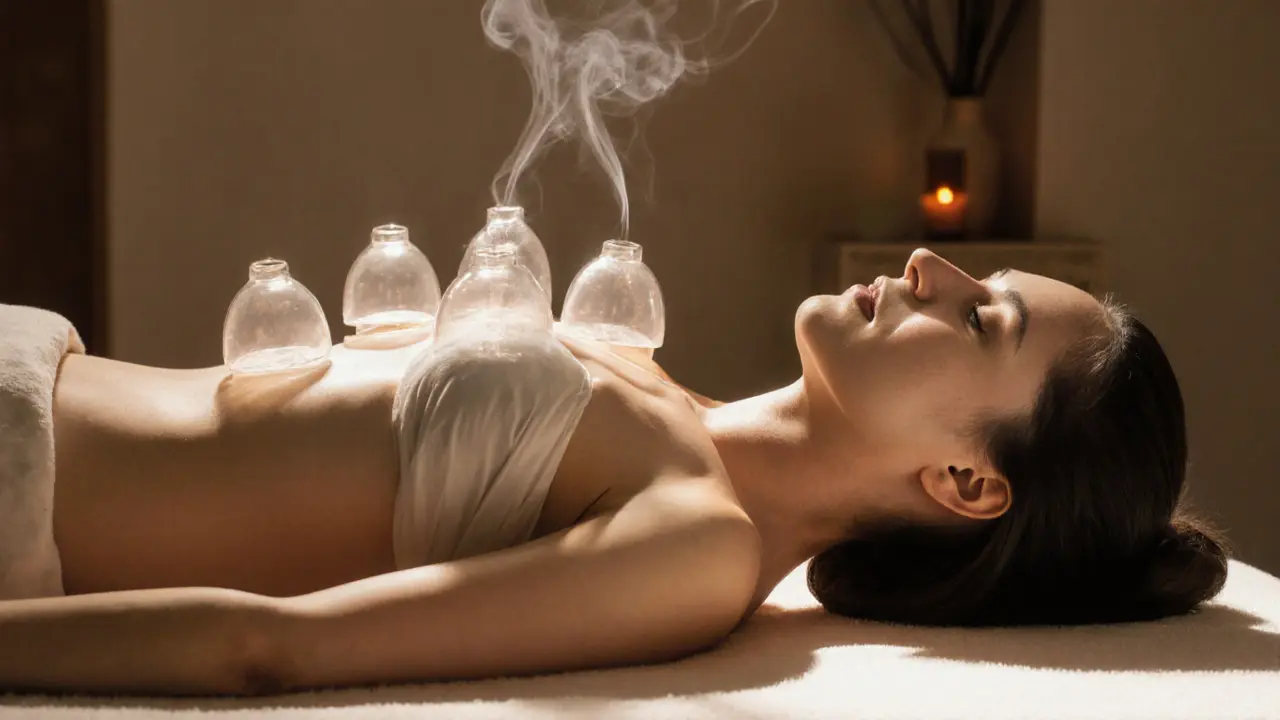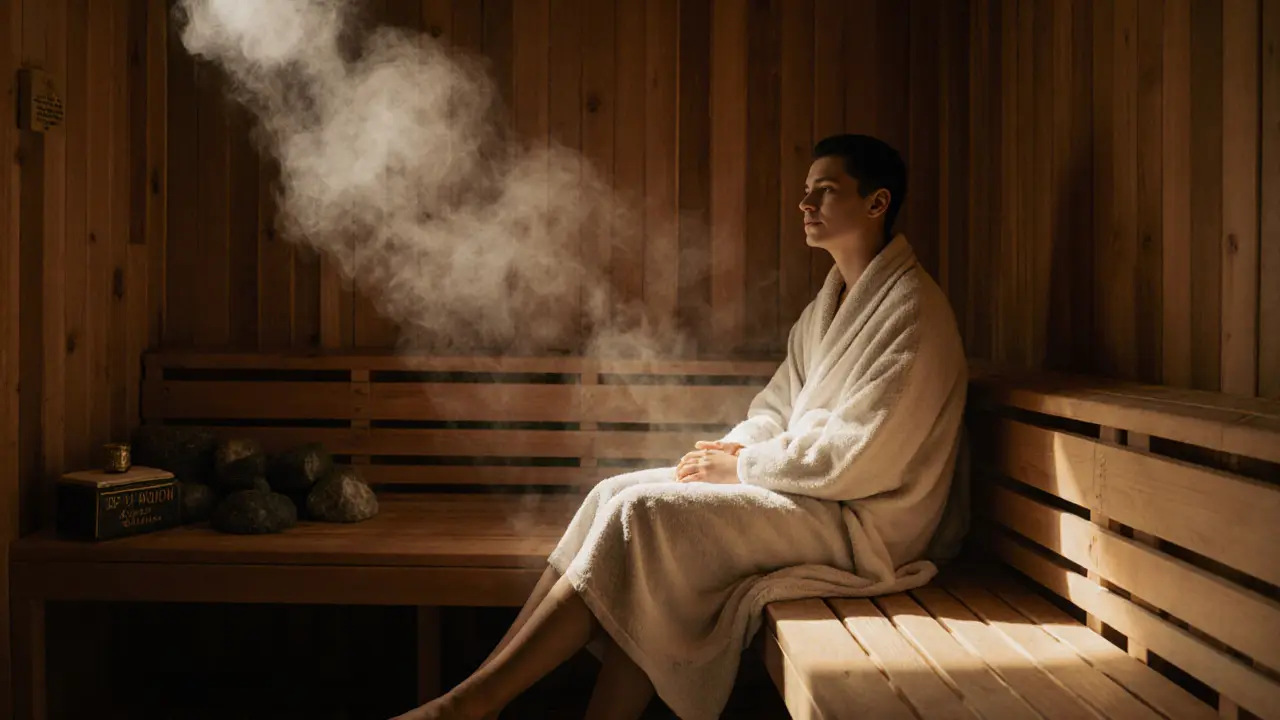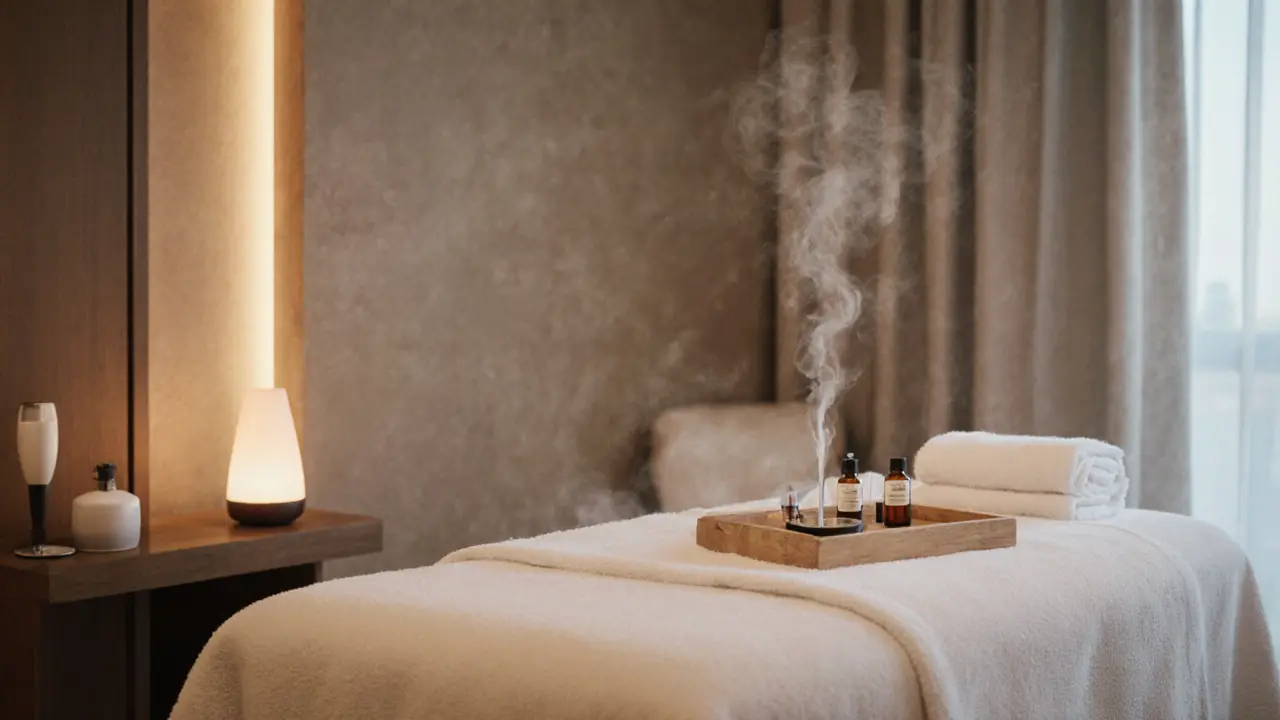Do You Exfoliate or Cleanse First? The Right Order for Glowing Skin
When it comes to body care, exfoliate or cleanse first is one of the most common questions-and one of the most misunderstood. If you’ve ever used a body scrub only to feel like your skin still feels dull or clogged, the answer might be simpler than you think. It’s not about how hard you scrub or how expensive the product is. It’s about the order. Get this step wrong, and you’re wasting time, product, and potentially irritating your skin. Get it right, and your skin absorbs moisture better, looks smoother, and feels softer than ever.
Understanding the Basics of Skin Preparation
Origins and History
Exfoliation isn’t new. Ancient Egyptians used sand and clay to slough off dead skin. Romans soaked in hot baths before scraping their skin with strigils. Even in traditional Ayurvedic practices, dry brushing and herbal scrubs were part of daily rituals. Cleansing, on the other hand, has always been about removing dirt, sweat, and oils. The idea of combining both steps into a modern routine is recent-but the logic behind the sequence? That’s been understood for centuries. The goal has always been the same: clean skin first, then remove the dead layer that blocks what’s underneath.
Core Principles or Components
Your skin has two main layers you’re working with: the surface layer (stratum corneum), made of dead skin cells, and the deeper layers where new cells form. Cleansing removes surface grime-pollution, sweat, sunscreen, lotions. Exfoliating removes the dead skin cells that cling to the surface. If you exfoliate before cleansing, you’re rubbing dead skin and dirt back into your pores. That’s like sanding wood without sweeping up the sawdust first. Cleansing clears the path. Exfoliating then works efficiently, letting the scrub reach the skin it’s meant to treat.
How It Differs from Related Practices
Many people confuse body scrub routines with other skin treatments. Here’s how they stack up:
| Practice | Key Feature | Primary Benefit |
|---|---|---|
| Cleansing First | Removes oils, sweat, and residue | Opens pores, prepares skin for scrub |
| Exfoliating First | Scrapes dead skin before cleaning | Traps dirt in pores, reduces effectiveness |
| Wet Skin Exfoliation | Scrub applied after showering | Softer skin, less friction, better glide |
| Dry Brushing | Scrubbing before water | Stimulates circulation, not for deep exfoliation |
Who Can Benefit from This Routine?
Everyone. Seriously. Whether you have oily skin, dry patches, keratosis pilaris, or just want smoother legs, this order works. People with sensitive skin need to be gentler, but the sequence still applies. Athletes who sweat daily, travelers dealing with dry climates, and anyone using retinoids or chemical exfoliants benefit from cleaning first. It’s not about skin type-it’s about skin function. Your skin is designed to shed. You just need to help it do so cleanly.
Benefits of a Proper Skin Prep Routine
Deeper Product Absorption
Think of your skin like a sponge. If it’s covered in grime and dead cells, it can’t soak up moisture. After cleansing, your skin is clean and ready. When you follow with a body scrub, you’re not just removing flakes-you’re creating a smooth surface for lotions, oils, and serums to sink in. Studies show that properly prepped skin can absorb topical products up to 70% more effectively. That means your expensive body butter actually works.
Reduced Breakouts and Clogged Pores
Body acne isn’t just a teenage problem. It’s common on the back, chest, and arms-especially if you’re using heavy lotions or wearing tight clothing. Exfoliating after cleansing helps flush out pores that are blocked by dead skin and residue. Skipping the cleanse step means you’re grinding dirt into those pores, which can lead to bumps, blackheads, and irritation. A clean base means fewer clogs and clearer skin.
Improved Skin Texture and Radiance
Dead skin reflects light poorly. That’s why dull, rough skin looks tired. Regular exfoliation after cleansing reveals the brighter, newer skin underneath. You don’t need to scrub daily-once or twice a week is enough. But when you do it right, the difference is noticeable. Skin looks even, feels silky, and glows naturally. No highlighter needed.
Enhanced Self-Care Experience
There’s a reason spa treatments start with a soak and cleanse. It’s not just luxury-it’s preparation. When you cleanse before scrubbing, you’re creating a ritual. The warmth of the water opens pores. The scent of your cleanser calms your mind. Then the scrub becomes a mindful massage, not a chore. This sequence turns a routine into a reset. It’s the difference between rushing through your shower and stepping out feeling renewed.
What to Expect When Engaging with a Body Scrub Routine
Setting or Context
You don’t need a spa to do this right. A warm shower or bath is perfect. Make sure the water isn’t scalding-it strips natural oils. Keep the room warm enough so you don’t shiver after stepping out. Have your cleanser, scrub, and towel ready. If you’re using a loofah or exfoliating glove, have it clean and dry. A clutter-free space helps you focus on the process, not the mess.
Key Processes or Steps
Here’s the simple flow:
- Wet your skin with lukewarm water for 1-2 minutes to soften dead cells.
- Apply a gentle cleanser and massage it over your entire body. Rinse thoroughly.
- Turn off the water slightly (or step out briefly) to apply your scrub. Focus on rough areas: elbows, knees, heels, back.
- Use circular motions for 1-2 minutes. Don’t scrub aggressively-let the granules do the work.
- Rinse off completely. Pat dry with a towel. Don’t rub.
- Apply moisturizer within 3 minutes while skin is still slightly damp.
Customization Options
Not all scrubs are the same. Sugar scrubs are gentler, ideal for sensitive skin. Salt scrubs are more intense-great for thick skin but avoid if you have cuts or eczema. Oil-based scrubs hydrate as they exfoliate. If you’re using a chemical exfoliant (like lactic acid), skip physical scrubs on the same day. Use chemical exfoliants 2-3 times a week, and physical scrubs once or twice. Adjust based on how your skin feels. If it stings or turns red, you’re overdoing it.
Communication and Preparation
If you’re doing this with a partner or getting a professional massage, talk ahead of time. Let them know if you have sensitive areas, recent sunburns, or skin conditions. Don’t assume they know. And if you’re using a new product, test it on a small patch of skin first. A little prep prevents big regrets.
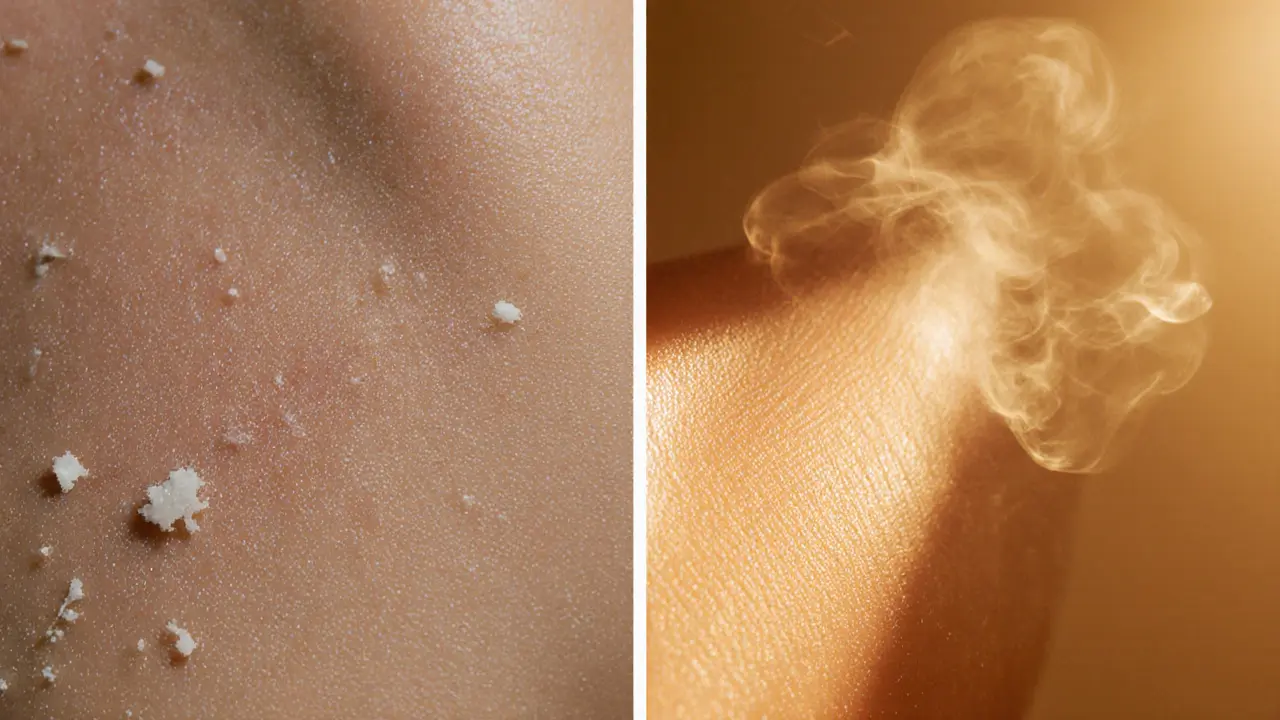
How to Practice or Apply This Routine
Setting Up for Success
Keep your scrub in a dry, cool spot. Moisture breeds bacteria. Use a clean loofah or your hands-never reuse a dirty one. Store your body wash and scrub in separate bottles to avoid contamination. Have a towel ready before you step out of the shower. The moment you get out, you’re losing moisture. Act fast.
Choosing the Right Tools
Look for scrubs with natural exfoliants: sugar, salt, ground coffee, or jojoba beads. Avoid microplastics-they’re bad for your skin and the planet. If you’re unsure, check the ingredient list. If it says "polyethylene" or "polypropylene," skip it. For sensitive skin, pick fragrance-free or oat-based scrubs. Brands that list plant oils (like coconut or almond) as top ingredients are usually gentler.
Step-by-Step Guide
Here’s your foolproof sequence:
- Start with a warm (not hot) shower. Let water hit your skin for 90 seconds.
- Apply cleanser with your hands. Massage in circles. Rinse until no slippery residue remains.
- Turn off the water. Scoop a golf-ball-sized amount of scrub. Start with legs, then move to arms, back, and feet.
- Use slow, circular motions. Spend 30 seconds per area. Don’t rush.
- Rinse with lukewarm water. Make sure no granules are left behind.
- Pat skin dry. Immediately apply a rich body oil or cream.
Tips for Beginners or Couples
If you’re new to this, start slow. Once a week is enough. Over-exfoliating causes micro-tears and irritation. If you’re doing this with a partner, make it a ritual. Take turns applying the scrub. It’s a great way to bond. Use calming scents like lavender or chamomile. Play soft music. Make it a moment, not a task.
Safety and Ethical Considerations
Choosing Qualified Products
There’s no licensing for body scrubs-but there are standards. Look for products labeled "dermatologist-tested" or "hypoallergenic." Avoid those with alcohol as a top ingredient-it dries skin. If you have eczema, psoriasis, or rosacea, consult a dermatologist before using scrubs. Some formulations are safe; others are not.
Safety Practices
Here’s how to scrub safely:
| Practice | Purpose | Example |
|---|---|---|
| Don’t scrub over cuts or sunburns | Prevent infection and pain | Wait 48 hours after sun exposure |
| Use gentle pressure | Avoid micro-tears | Let granules glide, don’t dig in |
| Rinse thoroughly | Prevent residue buildup | Check for sugar or salt stuck in folds |
| Replace loofahs monthly | Stop bacterial growth | Use silicone brushes or hands instead |
Setting Boundaries
Your skin is your own. If something burns, stings, or feels wrong-stop. Don’t push through discomfort. Some people think pain equals effectiveness. That’s a myth. Effective exfoliation should feel soothing, not punishing.
Contraindications or Risks
Avoid scrubs if you have:
- Active acne or pustules
- Recent waxing or laser treatments
- Open wounds or severe eczema
- Diabetes with reduced sensation (risk of unnoticed injury)
If you’re unsure, ask a dermatologist. It’s better to be safe than sorry.
Enhancing Your Experience with This Routine
Adding Complementary Practices
Pair your scrub with dry brushing before showering for extra circulation. Or follow up with a hydrating oil like squalane or rosehip. If you’re into mindfulness, try breathing slowly while scrubbing. Focus on the sensation. It turns a chore into a meditation.
Collaborative or Solo Engagement
Doing this alone? Make it your 10-minute me-time. Do it with a partner? Make it a ritual. Light candles. Play music. Swap scrubs. It’s a simple way to connect.
Using Tools or Props
A silicone body brush is great for sensitive skin. A loofah works but must be replaced often. A shower stool helps if you’re scrubbing feet. A small bowl for your scrub keeps it dry between uses.
Regular Engagement for Benefits
Consistency beats intensity. Once a week is enough for most. Twice a week if your skin is thick or you sweat a lot. More than that? You risk irritation. Think of it like watering a plant-too much, and you drown it. Too little, and it wilts. Find your sweet spot.
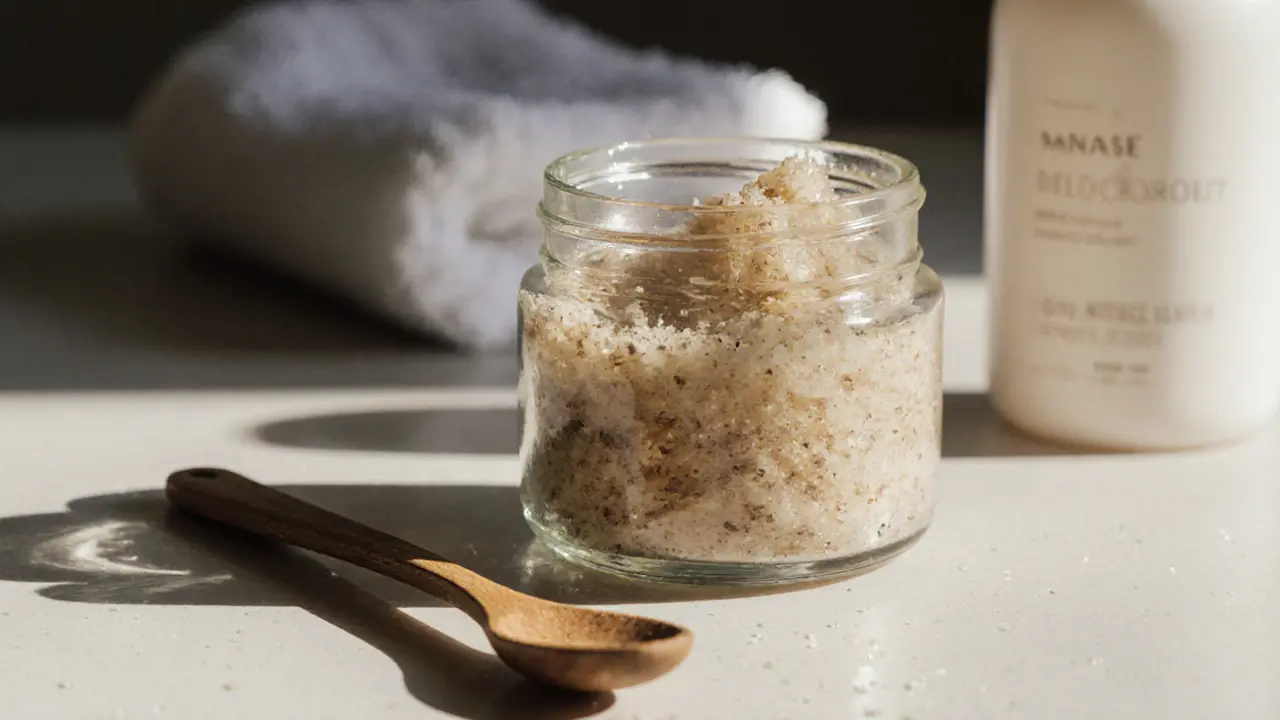
Finding Resources or Experts for This Routine
Researching Qualified Products
Look for brands with transparent ingredients. Avoid anything with parabens, synthetic dyes, or artificial fragrances. Read reviews from people with similar skin types. Dermatologist-recommended brands like CeraVe, Amlactin, and The Body Shop have reliable formulas.
Online Guides and Communities
Check out the American Academy of Dermatology’s website for general skin care advice. Reddit’s r/SkincareAddiction has honest, real-user reviews. Avoid TikTok trends that say "scrub daily"-they’re not backed by science.
Legal or Cultural Considerations
In some cultures, body scrubbing is tied to spiritual or religious rituals. Respect those traditions. If you’re using products inspired by global practices, learn their origins. Don’t reduce them to trends.
Resources for Continued Learning
Books like "The Beauty of Skin" by Dr. Hadley King or "The Dermatologist’s Guide to Skin Care" offer science-backed advice. YouTube channels like Dr. Shereene Idriss break down skincare simply and clearly.
FAQ: Common Questions About Exfoliate or Cleanse First
Should I exfoliate before or after cleansing?
Always cleanse first. Cleansing removes sweat, oil, sunscreen, and environmental dirt. If you exfoliate before cleaning, you’re grinding that grime into your skin, which can clog pores and reduce scrub effectiveness. Cleansing clears the surface so your scrub can work on dead skin cells, not dirt. This sequence is backed by dermatologists and skincare professionals worldwide.
Can I use a body scrub every day?
No. Most skin types only need exfoliation once or twice a week. Daily scrubbing can strip natural oils, cause redness, and damage your skin barrier. If you have oily skin, stick to twice a week. If you’re dry or sensitive, once a week is enough. Over-exfoliating leads to irritation, flakiness, and even breakouts. Let your skin recover between sessions.
What’s the difference between a body scrub and a loofah?
A loofah is a tool-it helps you apply cleanser or scrub. A body scrub is a product with exfoliating granules. You can use a loofah with a scrub, but it’s not required. Some people prefer hands for better control. Loofahs can harbor bacteria if not dried properly. Replace them every 3-4 weeks. For sensitive skin, skip the loofah and use your fingers.
Is it better to exfoliate in the morning or at night?
Night is ideal. Your skin repairs itself while you sleep. Exfoliating in the evening removes the day’s buildup and lets your nighttime moisturizers absorb better. Morning exfoliation can make skin more sensitive to sun. If you do it in the morning, always follow with sunscreen-even on your body. But for most people, nighttime is the smarter choice.
Do I need to moisturize after scrubbing?
Yes. Exfoliation removes dead skin, but it can also temporarily dry out the surface. Moisturizing within 3 minutes locks in hydration and repairs the skin barrier. Use a thick cream or oil-especially on elbows, knees, and heels. Skipping this step defeats the purpose of scrubbing. Your skin will feel smooth now, but dry again by tomorrow.
Conclusion: Why This Order Matters
A Path to Healthier Skin
Exfoliate or cleanse first isn’t just a skincare rule-it’s a basic principle of skin health. Clean skin absorbs better. Clean skin heals better. Clean skin looks better. Getting this step right transforms your entire routine. You don’t need expensive products. You just need the right order.
Try It Mindfully
Start slow. Try it once this week. Notice how your skin feels afterward. If it’s softer, smoother, and more radiant-you’ve found your groove. If not, adjust. Maybe you need a gentler scrub. Or less pressure. Or better moisturizer. Listen to your skin. It tells you what it needs.
Share Your Journey
Tried this routine? Share your experience in the comments. What scrub do you love? What changed for you? Follow this blog for more simple, science-backed tips on body care. Your skin deserves more than trends-it deserves care.
Some links may be affiliate links, but all recommendations are based on research and quality.
Word count: 1,723
Suggested Visuals
- A person in a steamy shower using a body scrub with hands, soap suds visible, natural lighting
- Side-by-side comparison: dull skin vs. glowing skin after scrub routine
- Close-up of sugar and coconut oil body scrub in a glass jar with wooden spoon
- Hand applying scrub to elbow with gentle circular motion
- Post-scrub moisturizer being applied to damp skin
Suggested Tables
- Comparison of Skin Prep Steps (already included)
- Body Scrub Safety Tips (already included)
- Key Benefits of Proper Exfoliation Order (Benefit, Description, Impact)

